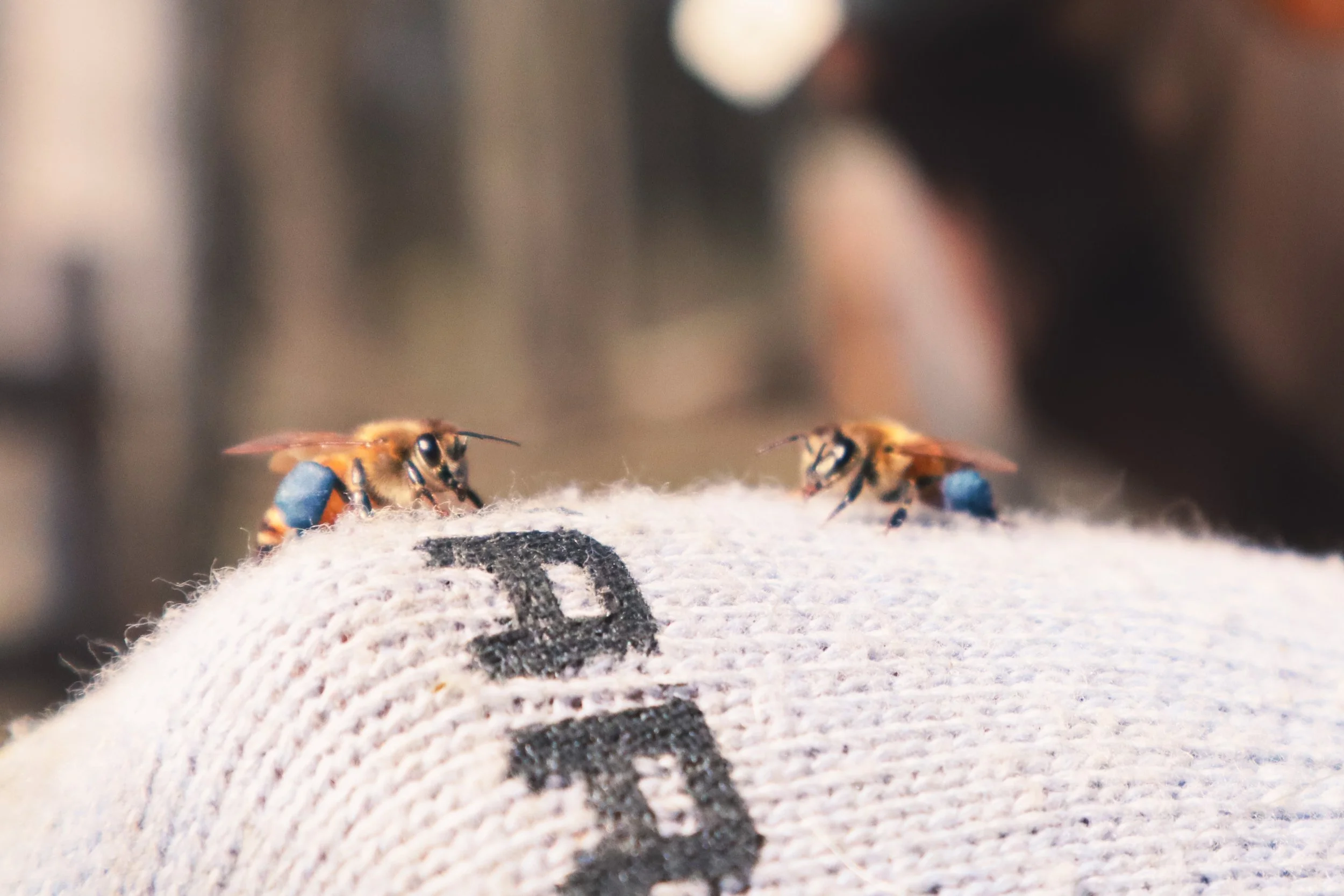is beekeeping actually sustainable?
One of the reasons honey from Evan’s Honey Co. tastes so good is our extraction process. As a small operation, we’re able to get more hands-on with harvesting and avoid the processes that dilute the flavor of most of the honey found in grocery stores. Our approach to beekeeping is another! There are a handful of things we do to keep things as simple and sustainable as possible, and we think it enhances the flavor of our honey. Knowing our processes and getting answers straight from the people keeping the bees is one of the biggest reasons to KNOW YOUR BEEKEEPERS! We’re excited to get transparent about how we operate and share how we do what we do with you!
Beekeeping isn’t always as sustainable as you’d think. There can be a good deal of waste and stress involved. Sure, pieces of that are unavoidable, but others aren’t! Luckily, we have some creative ways to reduce, reuse, and recycle.
Reducing single-use plastics.
They’re cheap, they work, and they’re everywhere! Single-use plastics are in every industry because they can be an easy and convenient way to cut costs. Bags, bottles, and straws are the main places we see these in beekeeping and honey. Since beekeeping doesn’t directly help the environment, these plastics can greatly affect our net impact! We don’t love that, so we decided to choose higher quality, longer lasting materials.
Evan’s Honey Co. only uses glass jars for bottling. We don’t even offer honey straws because we can’t justify the waste! They’re more expensive, but definitely worth it. You can reuse and/or recycle them easily (our jars are the perfect vessel for the candle makers out there :) ) and they won’t affect the delicate flavors of raw honey long term, unlike those plastic bottles. When needed, we use paper bags and packing materials. We like to use the bags and other paper waste as smoker fuel! Little known fact: dipping anything papery (or even better, burlap or cheesecloth) in beeswax makes an excellent fire starter! You also could use old newspapers, paper bags, cardboard boxes, packing paper, you name it. After all, grill season is right around the corner!
Location, location, location.
The locations of hives and apiaries are carefully planned, as well. We look at the physical location as well as the plants around them. Honeybees can compete with native pollinators for resources…and, if left uncontrolled, they typically win. One thing we’re doing is factoring local hive counts into our placement decisions. The goal is to purposefully create honeybee-free zones for native pollinators to have to themselves. Our main strategy, however, involves you! The best lesson beekeeping can teach is awareness. Looking out for the bees invites you to learn more about the flowers, shrubs, and trees that attract them. We want to provide ample food sources for our bees and all pollinators, for that matter. Plant for pollinators! And stay tuned for tips on helping out our lil buddies!
(not) On the road, again!
Commercial beekeeping operations play a vital role in supporting the agricultural industry by moving hives across the country for pollination services. You’ve all heard bees are responsible for one in every three bites of food. We rely on those big operations. All that moving stress the bees, though. It’s not all bad considering those contracts involve limits on farmers’ pesticide use, which is always nice. We try to limit moving our hives as much as possible, anyways. It’s small potatoes, but we like to think our bees appreciate it!
Shouting-out native bees :)
Spreading the word about solitary bees (indirectly) helps offset some of that competition. How? Well, we share how good they are at pollinating smaller areas for the gardeners who want that. Honeybees have baskets on their legs that collect pollen really, really well. Cool for them, since they need a lot of it to feed their baby bees. In terms of pollination, though, they’re a little too good! Compared to honeybees, solitary bees (like mason bees, leafcutter bees, bumblebees, and sweat bees) are significantly better at pollination simply because they make more of a mess when collecting pollen. These bees don’t fly very far from their homes (somewhere around 300 ft) and don’t sting often (some are stingless!). If you want better pollination in your garden, get a native bee house!
All in all, we try to do most of the work so you don’t have to! We’ll keep using sustainable materials and recycling waste as best as we can. And if you want to get involved, we’ve thought of a few straightforward options. The best thing we can all do? Plant, plant, plant!



